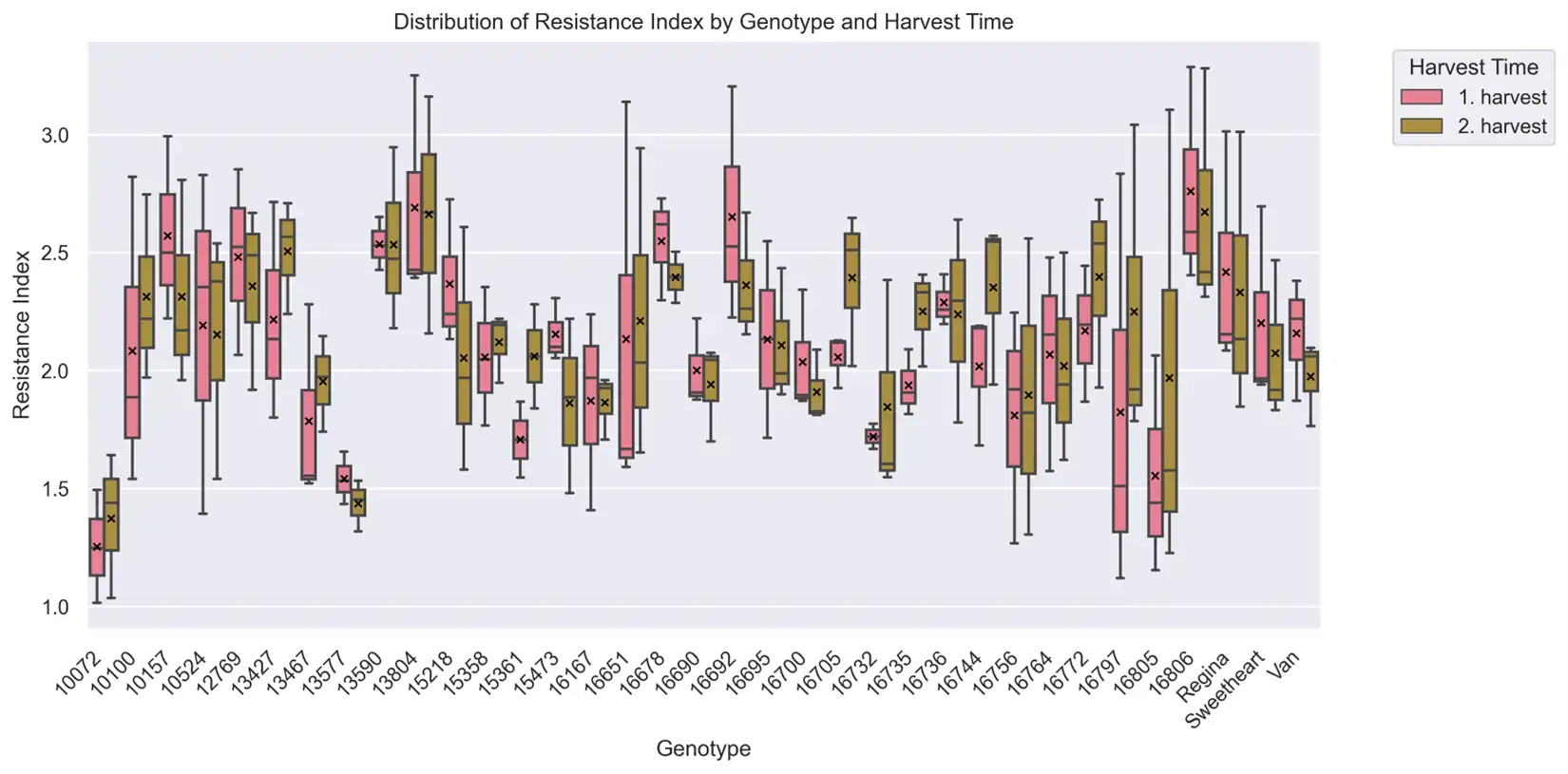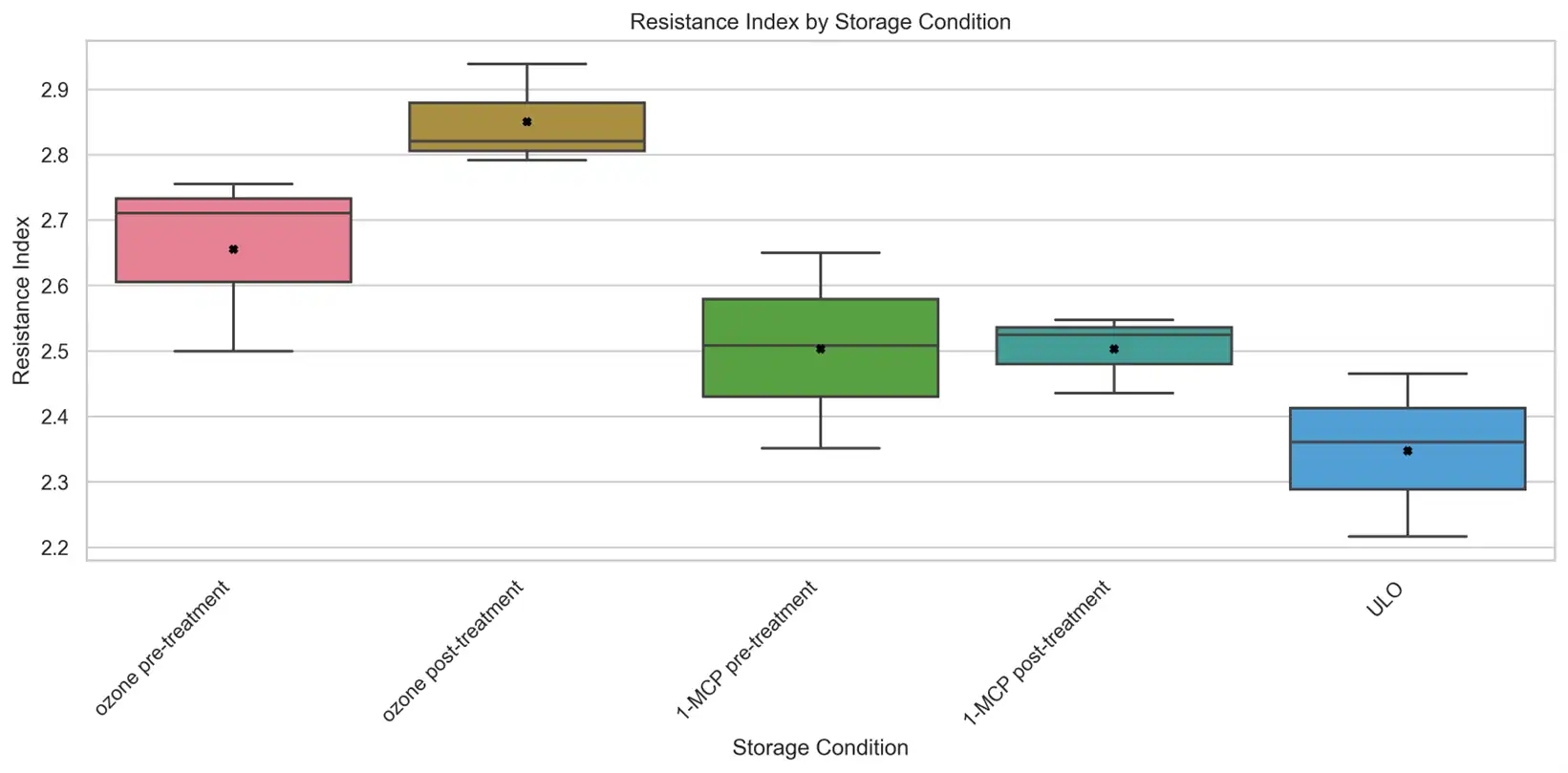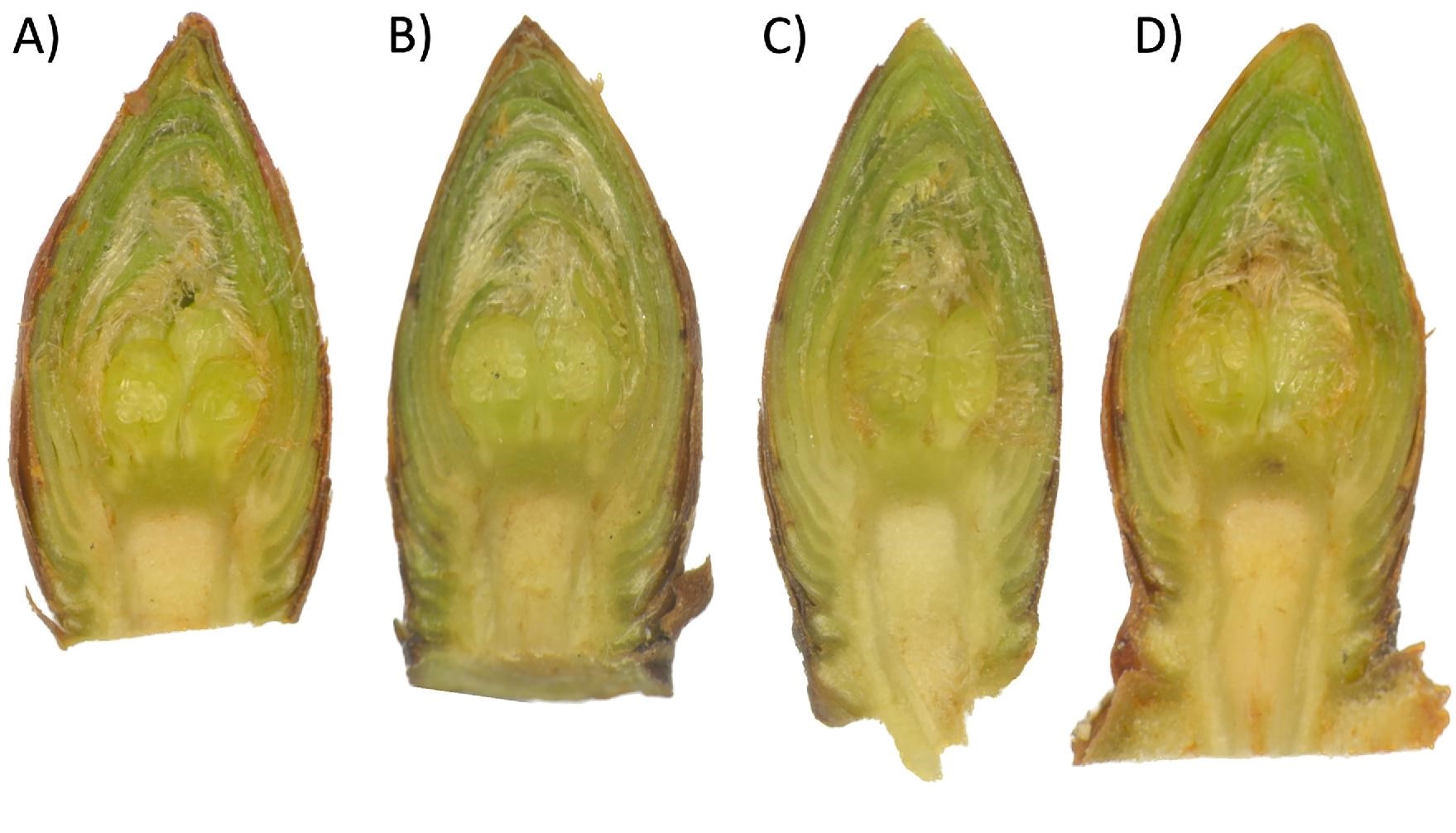Surface pitting: a major postharvest challenge in sweet cherries
Surface pitting is a significant postharvest disorder in sweet cherries (Prunus avium L.). It reduces fruit appearance and market value and shortens shelf life by increasing decay risk.
A recent three-year study in the Czech Republic examined how fruit quality and storage conditions influence the reduction of this disorder.
What is surface pitting?
Pitting shows up as small depressions on the cherry skin caused mainly by impacts and compression during harvest and handling.
This issue affects up to 80% of cherries in commercial supply chains — often more than fungal decay. It facilitates microbial invasion and moisture imbalance, accelerating spoilage.
The study
The study evaluated 35 sweet cherry genotypes: 32 breeding accessions and three cultivars (‘Van’, ‘Regina’, and ‘Sweetheart’) over three seasons. Fruit firmness, size, and soluble solids content (SSC) were measured.
Surface pitting was mechanically induced to mimic handling damage. Afterward, fruits were stored for 21 days at 1.5 °C and 85% relative humidity under four storage conditions:
- Modified atmosphere packaging (MAP): 17% O2 / 3% CO2
- Ultra-low oxygen (ULO): 1% O2 / 2% CO2
- Ozone treatment (0.2 ppm for 8h, applied pre- or post-damage)
- 1-methylcyclopropene (1-MCP; 0.0016 g/m³ for 8h, pre- or post-damage)
Resistance index (RI) results
Surface pitting resistance was measured using a Resistance Index (RI), scaled from 1 (no damage) to 4 (severe damage). RI values varied widely between genotypes — from 1.31 ± 0.26 (‘10072’, most resistant) to 2.72 ± 0.45 (‘16806’, least resistant).
Firmness showed a strong negative correlation with RI (r = –0.606, p < 0.001), meaning firmer cherries suffered less damage.
SSC and fruit size were weakly or not significantly correlated with RI (r = –0.022 and r = –0.07 respectively), indicating sweetness and size are poor predictors of resistance.
Effect of harvest maturity
Harvest maturity had a minor effect on pitting susceptibility:
- Early harvest fruit showed an average RI of 2.12 ± 0.48
- Commercial maturity fruit had an RI of 2.14 ± 0.45
Performance of reference cultivars
‘Van’ demonstrated moderate tolerance (RI = 2.07 ± 0.22). ‘Regina’ (2.37 ± 0.51) and ‘Sweetheart’ (2.14 ± 0.35) were more susceptible.
Most breeding accessions performed better than ‘Regina’, with some exceeding ‘Sweetheart’ and ‘Van’ in firmness and resistance, indicating successful selection for resilience.
Storage conditions impact
Among storage treatments:
- ULO provided the best protection with the lowest average RI (2.54).
- MAP and ozone post-treatment were slightly less effective (RI ≈ 2.7).
- 1-MCP post-treatment showed the highest susceptibility (RI = 2.76).
In tests on cultivar ‘Tamara’ under induced damage:
- ULO again had the lowest RI (2.35 ± 0.13).
- Both 1-MCP pre- and post-treatments had moderate effects.
- Ozone pre-treatment was moderately effective (2.66 ± 0.14).
- Ozone post-treatment increased surface damage (2.85 ± 0.08).
Timing of protective treatments
Applying ozone and 1-MCP before mechanical damage significantly improved effectiveness.
Proactive treatment before handling stress enhances fruit resilience. Reactive treatments — particularly ozone after damage — can worsen injury.
Practical recommendations
- MAP effectively preserves firmness for short-term storage or local markets.
- ULO storage is preferred for long-distance transport and extended shelf life.
Conclusion
Surface pitting resistance mainly depends on genotype, with fruit firmness as the key marker.
Harvest maturity plays a modest role, while treatment timing critically influences results.
For breeding and commercial practice:
- Select firm genotypes and use the resistance index for screening.
- Apply protective treatments before stress events.
- Use ULO storage for export markets to reduce pitting and maintain quality.
 Classificazione dei frutti in categorie da 1 a 4 (da sinistra a destra) secondo il grado di danno durante la valutazione. Suran et al. (2025). (Crediti immagine: https://doi.org/10.3390/horticulturae11070716).
Classificazione dei frutti in categorie da 1 a 4 (da sinistra a destra) secondo il grado di danno durante la valutazione. Suran et al. (2025). (Crediti immagine: https://doi.org/10.3390/horticulturae11070716).
Tabel 1. Comparison of key qualitative parameters in sweet cherry fruits across two harvest periods. The table summarizes mean values and standard deviations (SD) for Fruit Firmness, Fruit Size, Soluble Solids Content (SSC) and Resistance Index. Suran et al. (2025). (Image credits: ttps://doi.org/10.3390/horticulturae11070716).
| Variable | 1st harvest | SD | 2nd harvest | SD | p-value |
|---|
| Fruit Firmness (g/mm) | 210.74 | 25.46 | 201.31 | 20.99 | < 0.001 |
| Fruit Size (mm) | 25.32 | 2.22 | 25.86 | 2.23 | < 0.001 |
| SSC (°Brix) | 13.44 | 2.77 | 14.67 | 2.32 | < 0.001 |
| Resistance Index | 2.12 | 0.48 | 2.14 | 0.45 | > 0.05 |
Table 2. Correlation matrix showing Spearman correlation coefficients and p-values (*p < 0.05) for the relationships between Fruit Firmness, Fruit Size, Soluble Solids Content, and *Resistance Index. Suran et al. (2025). (Image credits: ttps://doi.org/10.3390/horticulturae11070716).
| Variable | Fruit firmness | Fruit size | Soluble solids content |
|---|
| Fruit Firmness | 1 | -0.365* | -0.304* |
| Fruit Size | -0.365* | 1 | 0.257* |
| Soluble Solids Content | -0.304* | 0.257* | 1 |
| *Resistance Index | -0.606* | -0.069 | -0.022 |
*RI scoring criteria: 1- no visible damage; 2- mild surface indentations; 3- moderate pitting; 4- extensive or deep pitting.
 Figure 2. Analysis of the variability in the resistance index of cherry genotypes against surface pitting (Kruskal-Wallis analysis of variance; p < 0.05). Suran et al. (2025). (Image credits: ttps://doi.org/10.3390/ horticulturae11070716).
Figure 2. Analysis of the variability in the resistance index of cherry genotypes against surface pitting (Kruskal-Wallis analysis of variance; p < 0.05). Suran et al. (2025). (Image credits: ttps://doi.org/10.3390/ horticulturae11070716).
 Figure 3. Analysis of the relationship between storage condition type and the resistance index of sweet cherry accessions (Kruskal-Wallis analysis of variance; p < 0.05). Suran et al. (2025). (Image credits: ttps://doi.org/10.3390/ horticulturae11070716).
Figure 3. Analysis of the relationship between storage condition type and the resistance index of sweet cherry accessions (Kruskal-Wallis analysis of variance; p < 0.05). Suran et al. (2025). (Image credits: ttps://doi.org/10.3390/ horticulturae11070716).
 Figure 4. Analysis of the relationship between storage condition type and the resistance index of sweet cherry ‘Tamara’. Suran et al. (2025). (Image credits: ttps://doi.org/10.3390/ horticulturae11070716).
Figure 4. Analysis of the relationship between storage condition type and the resistance index of sweet cherry ‘Tamara’. Suran et al. (2025). (Image credits: ttps://doi.org/10.3390/ horticulturae11070716).
Opening image source: Portal fruiticola
Pavol Suran
WSUO (CZ)
Cherry Times - Tutti i diritti riservati
















